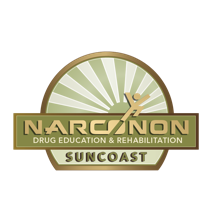DEA Announces 2018 Drug Stats and It’s Not Good News

The Drug Enforcement Administration just released the statistics on the drug crisis for 2018 and it shows that the problem in the United States is still a formidable threat. Each year seems to bring dark news about drug abuse in this country and the problem is seemingly getting worse, not better. After reading the DEA’s report on what’s currently going on in regard to drugs, some of their findings were a bit surprising.
It was interesting to find out that prescription drugs, in general, are still the leading cause of overdose deaths and have been since around 2001. Even though fentanyl is what’s being talked about the most, heroin overdose deaths practically doubled between 2013 and 2016, which is obviously attributed to the addition of fentanyl into the heroin supply. It was also shown that the growing, harvesting, and refining of opium poppies in Mexico has also significantly increased, thus increasing the activity of organized cartels. The Sinaloa and Jalisco New Generation Cartels are still the largest criminal drug threat in the U.S. and act as wholesalers to the localized, street-level dealers.
Fentanyl and other synthetic opioids are still the leaders in the cause of opioid-related overdose deaths. Fentanyl is more accessible than ever and is increasingly more attainable in the form of “fake” prescriptions pills made to look like other, real medications.
Finally, gang activity has increased and continues to run most of the street-level drug sales all over the United States and is still their main source of income.
This is the real deal people. This is a look at our current drug crisis and it’s quite obvious that the problem has persisted, gotten worse, and continued to kill and destroy lives. This isn’t good news. On the contrary, this is highly troubling, to say the least.
It’s needed now more than ever before that we ramp up drug education and prevention efforts to keep new people from becoming addicted. That’s one way to start handling the crisis. Prevent someone from picking up their first drug. Secondly, we need to channel resources to programs that actually work and that can actually help a person fight their addiction and get them drug-free. Truly drug-free and off everything. MAT (medication-assisted treatment) is not sobriety. It’s just trading one drug for another and it seems as though more people are starting to see it that way.
The idea of a quick-fix comes in a pretty package, but once that “Pandora’s Box” is opened, it’s extraordinarily hard to close. If you’re addicted, make an informed decision about what you’re going to do to get clean. If you’re the family of a loved one who’ struggling, do your research. Find the best program that fits their individual needs. A cookie-cutter program should be avoided. Each addict is an individual.
Beyond anything else, get help NOW. Not tomorrow, not after the holidays, not next year, but RIGHT NOW. Tomorrow is a gift, and it’s not guaranteed to any of us.
Sources Used:
